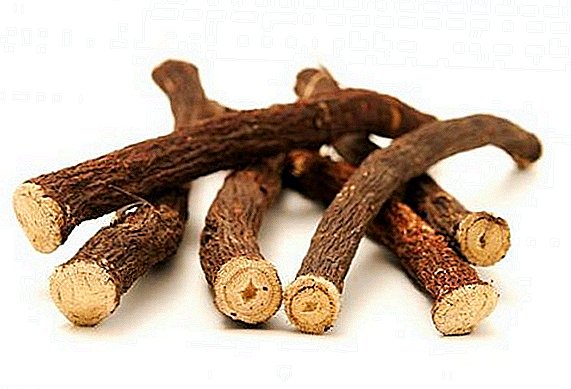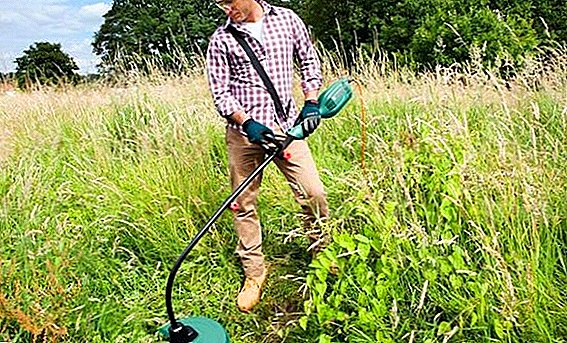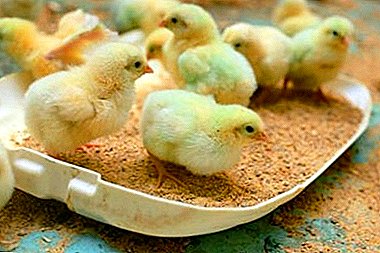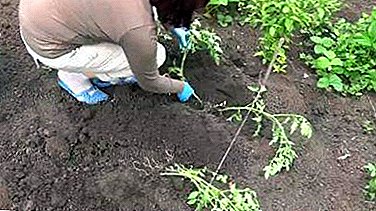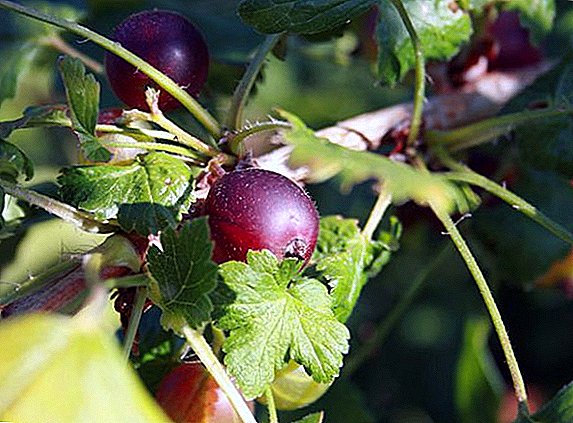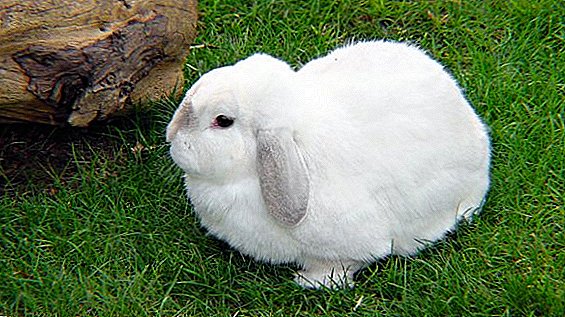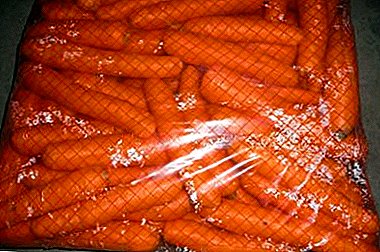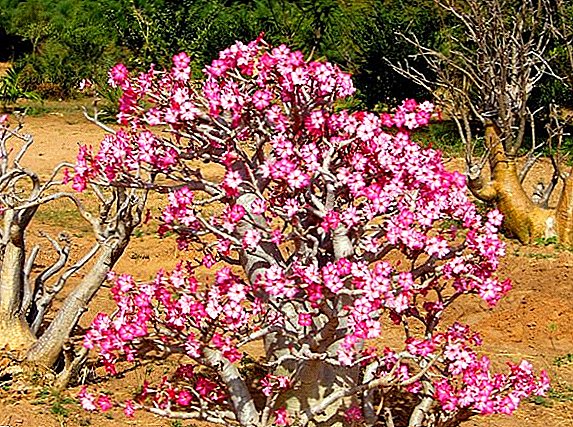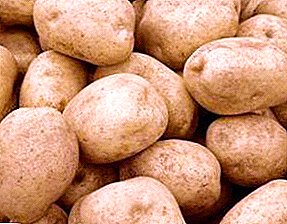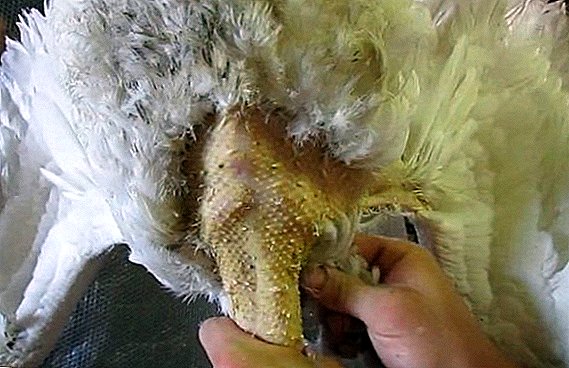 The need for plucking a goose carcass may arise from any hostess.
The need for plucking a goose carcass may arise from any hostess.
Experienced farmers to carry out the procedure will not be difficult, however, beginners should be taken very carefully and choose an effective and high-quality method of picking, based on several proven methods.
Dry way
Plucking a goose in a dry (domestic) way is quite convenient and fast for a beginner, but requires adherence to some mandatory rules. 
Advantages and disadvantages
Advantages of the dry method are:
- rapidity;
- no cost;
- no special equipment is required (only the cord for tying the carcass).
Did you know? An interesting feature of geese is the period of their molt, which is repeated twice a year. During it, the birds lose their plumage, because of which they lose the ability to fly for two months.
Disadvantages:
- Dry plucking should be carried out immediately after slaughter - after the carcass cools, the removal of feathers will become very problematic;
- many feathers cannot be used for other purposes - traces of fat remain on them.

Instruction
It is recommended to use step-by-step instructions compiled by experienced farmers for the manual holding of the highest quality dry plucking:
- Tie a bird with its paws and wings with a previously prepared cord.
- Place the carcass on a low table or on your lap.
- It is necessary to start the removal from large feathers on the tail and wings, then smaller ones are removed, in the end - down. Such a system is associated with the rapid “sticking” of large feathers to the goose bumps after slaughter, which makes the plucking procedure more problematic. Down can be removed with ease, even after complete cooling.
- For maximum compliance of feathers, they should be pulled in the direction of growth, and not in different directions.
- The end of the manipulation involves pressing on the wall of the peritoneum to release the tail and remove feathers from it, as well as singing and gutting the cleaned goose.
Important! If the goose carcass is prepared for sale or for a family holiday, which will be served entirely, plucking is done gradually and slowly. This will allow not to lose the bird a presentable look.
Cool way
Another classic method is a cold tweak, in which a goose carcass after slaughter must lie for several hours in a refrigerating chamber or in a winter cellar. 
Advantages and disadvantages
Advantages of removing feathers after cooling:
- for the procedure does not need special equipment, except for the refrigerator;
- minimum time (less than with the dry method);
- the peel remains intact, overall the plucked goose looks more attractive.
Disadvantages:
- rather long preliminary preparation of the carcass (at least four hours in a cold place);
- electricity consumption for the refrigerator;
- inability to use collected feathers.
It will be useful for you to learn about the peculiarities of the maintenance of such geese as Land, Italian, Mamut, Governor, Kuban, Tula and Gorky, Chinese, Linda, Hungarian, Arzamas, Toulouse, Rhine.
Instruction
Recommended step-by-step instructions:
- Goose carcass is placed in the refrigerator for 3-4 hours. If after a time the product remains noticeably warm in some places, it should be left for another hour or two.
- The cooled down goose should first be plucked from the tail and wings, be sure to pull feathers in the direction of growth.
- After treatment of the tail and wings, the procedure is performed on the sternum and back; at the end, feathers and fine down are plucked on the legs and the remaining parts of the body.
- Remnants of feathers are removed from the tail, first releasing it by pressing on the peritoneum.
- The final stage is singing and gutting.

Scalding technology
The method of scalding birds for quality plucking is a favorite and most popular with our grandparents. However, in addition to the indisputable advantages, this technique has several significant drawbacks.
Learn how to slaughter a goose and cut a goose, as well as how useful and how high-calorie goose meat is.
Advantages and disadvantages
Advantages of pre-scalding:
- easy pulling feathers;
- does not take much time;
- home equipment (basin, kettle) is available in any hostess.
Disadvantages:
- feathers and down completely lose their value;
- possible burns to the hands;
- the carcass should be processed very quickly, until it has cooled;
- minimum shelf life after tweaking. The processed goose needs to be cooked on the same day;
- the method requires a large consumption of water and electricity.

Instruction
The correct procedure for the scalding technique is as follows:
- Water is heated to 75-85 degrees. It is impossible to bring to the boil - the feathers will give in worse.
- Before scalding, the paws and wings of the bird are tightly bound.
- It is important to process all the feather coating with hot water.
- You should proceed to the cleaning of the carcass immediately after scalding, using the same technique as in the previous methods - start from the tail and wings, finish with small feathers and down.
- The tail is released and thoroughly cleaned of remaining feathers.
- Carefully plucked goose scorches and falls on the cutting.

Technique easy removal of feathers
The method of easy removal differs at first glance with strange manipulations done with the help of special equipment, however, the results of tweaking, without a doubt, will please any hostess.
Advantages and disadvantages
The advantages of easy removal:
- obtaining high-quality feather material after processing, which can be used to create pillows and other environmentally friendly products;
- minimum effort - feathers can easily fly off the carcass on their own.
Cons of the way:
- electricity and water costs;
- a big waste of time compared to other methods;
- preparation of special equipment: an iron with a steam function, a piece of natural fabric, a tank, a mattress pump, a rope for binding.

Instruction
After preparing all the tools, you need to proceed to such step-by-step actions:
- In the neck area of the goose, under the skin, the pump tube is fixed, the neck is clamped with fingers.
- The carcass is maximally inflated with air before raising feathers on the wings.
- The clamped tube is carefully removed, and the neck is tightly fixed with a rope. It is important not to let the air come back.
- A piece of cloth is dipped in cold water, applied to a selected part of the carcass and steamed with an iron.
- The steamed feathers on the areas are well separated from the body, preserving their original appearance.
Important! The fabric for the procedure can be replaced with ordinary gauze, but then it must be folded four times.
How to nip a wild goose
The flail of the wild goose is almost the same as that of the domestic goose, since the feather cover of wild birds is also easy to remove after applying the above effective methods. 
In addition to them, many farmers use some auxiliary tools and nozzles to significantly simplify the cleaning process:
- Peros'em machine "Voltera." Suitable for the hostess with experience, as the procedure requires quick movements and dexterity. If used improperly, the bird’s carcass can be severely damaged;
- the screwdriver and goose tip allow you to create an effective tweezer yourself. On the tool should clamp the nozzle, turn on and bring close to the feathers. The mechanism rotates and quickly clears down, allowing you to finish processing after 3 minutes.
Did you know? Wild and domestic geese form their nests with their own down and feathers. The female, preparing for the hatching of offspring, plucks feathers from her sides and abdomen for maximum warming and protection of her “home”.
 Removing the feather cover from the home or wild goose is considered a time consuming process and, despite the chosen method, involves gentle cleaning of the skin to obtain high-quality meat and feather.
Removing the feather cover from the home or wild goose is considered a time consuming process and, despite the chosen method, involves gentle cleaning of the skin to obtain high-quality meat and feather.Subject to all the rules of preparation and step-by-step instructions, the patient owner will surely get the fast desired result.


